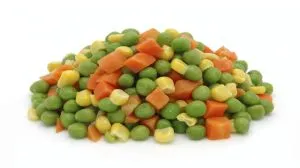It’s commonly believed that iceberg lettuce has very few nutrients, and is hardly worth eating. Certainly a health-conscious person doesn’t buy iceberg at the supermarket, but rather reaches for the darker green varieties of leafy veggies. Romaine gains slightly more respect, but true nutrition devotees will go for arugula, field greens and kale.
Coming in close behind iceberg lettuce are cucumber and celery. These two are watery filler vegetables, typically chosen as vehicles for hummus or peanut butter, or used as a topper for a salad. They certainly wouldn’t be placed at the top of anyone’s most-nutritious list.
But are these poor reputations warranted? What if iceberg, cucumber and celery actually have a lot more to offer than we thought?
Iceberg lettuce actually provides an impressive quantity of vitamin K, with 22 percent of your recommended daily intake in just one cup of shredded leaves. Vitamin K plays an important role in blood clotting and bone building. The vitamin K1 that we get from leafy vegetables is partially changed to vitamin K2 in the body, and is then used to direct the placement of calcium to ensure it goes to the bones and teeth, not lodged into soft tissues (causing problems like hardening of the arteries and kidney stones).
Celery offers good amounts of calcium, magnesium, potassium and B vitamins. It also offers detoxifying and anti-inflammatory compounds, which help regulate blood pressure and reduce puffiness. Celery contains 10 percent of the recommended daily amounts of both folate and vitamin A in a one-cup serving.

While it’s true that darker lettuces like romaine still top iceberg in measures of known nutrients such as vitamin A, vitamin K and carotenoids, iceberg still deserves a place in your grocery cart. Iceberg, along with its watery friends cucumber and celery, are highly alkaline-forming and are excellent sources of water balanced with electrolytes, which helps maintain healthy osmotic pressure in the circulatory system. It’s estimated that modern science has yet to discover or recognize 60–90 percent of the nutrients and energy benefits contained in food, so we may not know what we’re missing out on if we exclude these hydrating vegetables from our diet.
Finally, try this delicious detox smoothie recipe that incorporates romaine lettuce, cucumber and celery. It’s highly refreshing and packed with antioxidants. It will help rejuvenate your cells, cleanse your blood, and brighten your skin!
|
Alkalizing Green Detox Smoothie
|
| Prep Time: |
| 5minutes |
| Cook Time: |
| nocook |
| Total time: |
- 1cup spinach or torn kale leaves
- 1cup torn romaine leaves
- 1/2 cup chopped cucumber
- 1/2cup chopped celery
- 1small pear (or 1/2 large), cored and chopped
- 1 banana, chopped (preferably frozen)
- 1cup water or coconut water
- 1tbsp of fresh mint
- 1tbsp of fresh parsley
- 1/2 to 1whole lemon, juiced
- 1/2tbsp chia seeds
- 1/4 inch slice ginger root, peeled
- pinch of cayenneoptional
- pinch of cinnamonoptional
- pinch of turmericoptional
- Place ingredients in blender and blend until completely smooth. Sweeten additionally, as desired, with raw honey. Optionally, replace the pear with half a green apple, or cilantro instead of mint.
—The Alternative Daily
Sources:
http://pubs.acs.org/doi/abs/10.1021/jf960339y
http://umm.edu/health/medical/altmed/supplement/quercetin
http://thegreenforks.com/super-detox-green-cleansing-smoothie
http://www.raw-food-health.net/Iceberg-Lettuce-Nutrition.html
http://www.fitday.com/fitness-articles/nutrition/healthy-eating/the-nutritional-food-value-of-celery.html
http://nutritiondata.self.com/facts/vegetables-and-vegetable-products/2476/2
http://www.medicaldaily.com/nutritional-value-lettuce-iceberg-versus-romaine-246532
http://www.care2.com/greenliving/10-powerful-advantages-of-eating-lettuce.html
